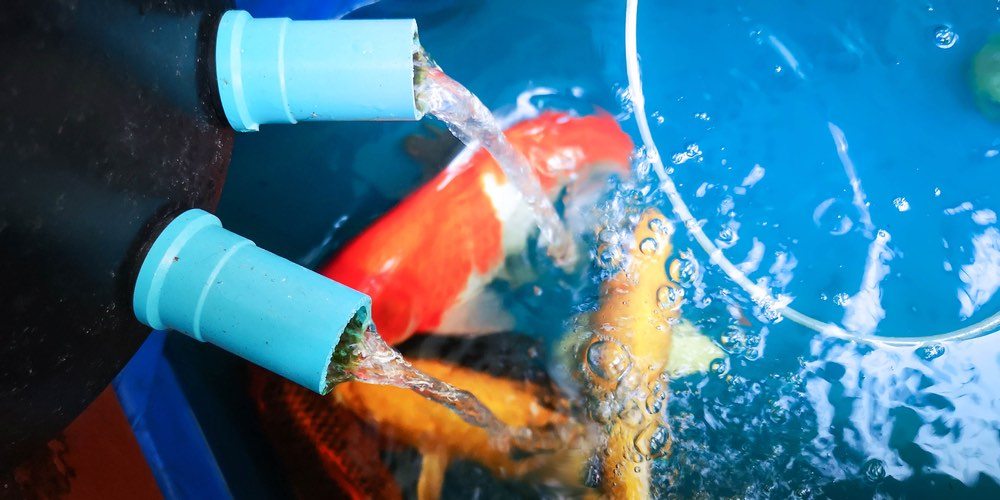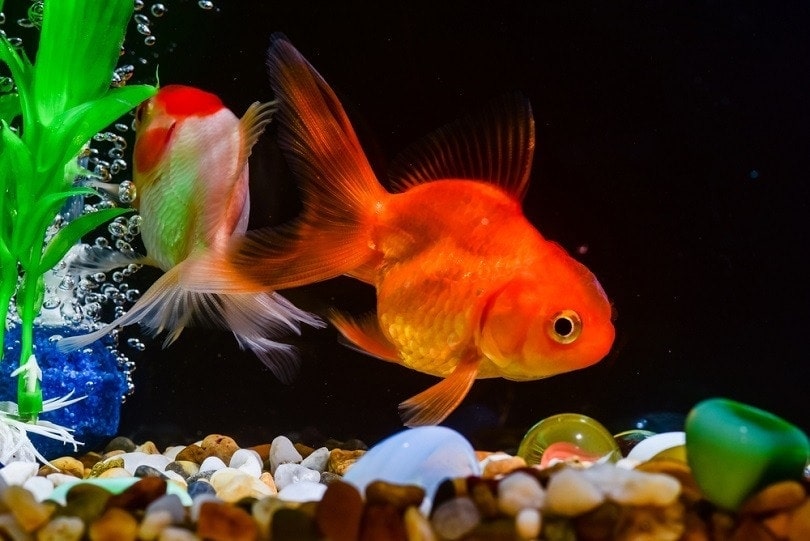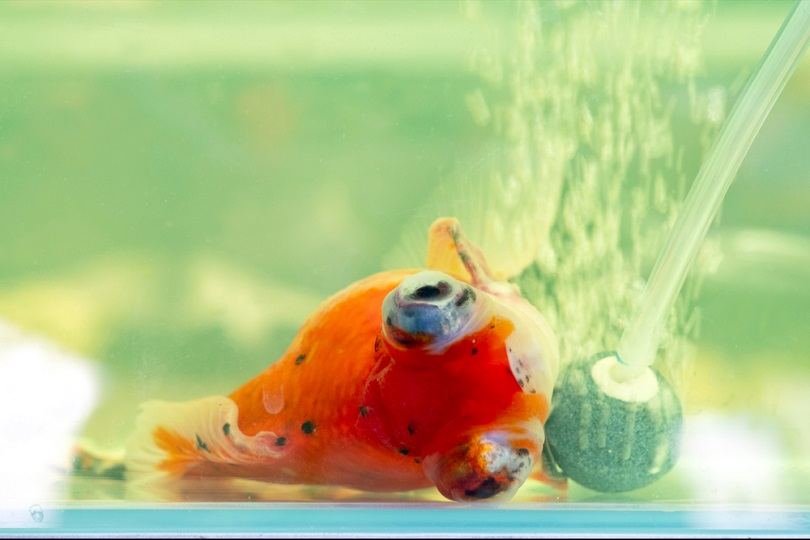10 Best Saltwater Aquarium Test Kits in 2024 – Reviews & Top Picks

Updated on

Keeping a saltwater aquarium can be an exciting hobby with all the colorful and exotic fish, coral, and plants available to you. However, keeping a saltwater aquarium is no easy feat! There is time and effort involved in it, and some aquatic inhabitants are very sensitive to changes in water quality. This means that monitoring your water parameters is imperative to the health of your tank.
We’ve put together reviews of the 10 best saltwater aquarium test kits to help you pick the right test kit for your tank. When it comes to testing your tank, you want a kit that tests all the parameters you need to monitor and provides you with accurate results you can trust.

A Comparison of Our Favorites in 2024
| Rating | Image | Product | Details | |
|---|---|---|---|---|
| Best Overall |
 |
API Saltwater Aquarium Master Test Kit |
|
Check Price |
| Best Value |

|
Tetra EasyStrips Saltwater Aquarium Test Strips |
|
Check Price |
| Premium Choice |

|
Red Sea Fish Pharm Test Kit |
|
Check Price |

|
BOSIKE Aquarium Test Strips |
|
Check Price | |

|
Capetsma Aquarium Test Strips |
|
Check Price |
The 10 Best Saltwater Aquarium Test Kits
1. API Saltwater Aquarium Master Test Kit – Best Overall
The best overall test kit for your saltwater aquarium is the API Saltwater Aquarium Master Test Kit. This kit includes reagents for testing ammonia, nitrite, and nitrate levels. It also includes the reagent for testing high-range pH, which will show you pH levels of 7.4 or above. This kit also includes four glass test tubes and thorough instructions for how to perform and read the tests. It also comes in a handy plastic box that holds each item securely. There are over 550 tests worth of materials in the kit.
One downside of the ammonia test in this kit is that sometimes it will show false low-level ammonia of 0.25 but treating for this level just in case shouldn’t harm your aquarium. It’s important to make sure to follow the instructions for performing these tests, especially the nitrate test, to get accurate results.
- Tests four parameters
- Includes test tubes
- Includes thorough instructions for performing and reading tests
- Includes secure box
- Over 550 tests per box
- If tests are performed correctly, can be extremely accurate
- Ammonia may show false low-level positive
- Must follow instructions as written for accurate results
2. Tetra EasyStrips Saltwater Aquarium Test Strips – Best Value
The best saltwater aquarium test kit for the money is the Tetra EasyStrips 6-in-1 Saltwater Aquarium Test Strips. These strips come in a secure plastic bottle that protects them from moisture, which can ruin the strips. They can be used for freshwater or saltwater tanks and can be purchased in packs of 25 tests and 100 tests. To use these strips, all you have to do is dip them in the tank water, swirl them, and pull them straight back out without shaking the water off. These strips measure nitrate, chlorine, and nitrite levels, alkalinity (KH) and pH, and the general hardness (GH) of the tank. They take 30 seconds for results to show and then you compare the strip to the color chart included on the bottle.
These test strips do not measure ammonia levels in the tank, which is an important waste product to monitor, especially in young or overstocked tanks. It also may be difficult to differentiate between the colors on the strips sometimes.
- Come in a secure bottle to protect the strips
- 25 or 100-count packs
- Easy to use
- Measure six vital water parameters
- Takes 30 seconds for results
- Moisture in the bottle will ruin the strips
- Do not measure ammonia levels
- May be difficult to differentiate colors on the strips
3. Red Sea Fish Pharm Test Kit – Premium Choice
The premium pick test kit is the Red Sea Fish Pharm ARE21525 Test Kit. This kit can perform 100 tests of pH, ammonia, and nitrite levels, 55 tests of KH, and 60 nitrate level tests. The kit includes simple instructions and color charts that are easy to read for results checking. While this kit has great functionality, it is at a premium price.
This kit comes in a plastic box but some of the items don’t have specific locations in the box, so you may have to find the organization that allows everything to fit with the box closed. Some of the test solution bottles may leak as well.
- Tests for five parameters
- Includes 100 tests, 60 tests, and 55 tests for different parameters
- Easy to use
- Color charts are easy to read
- Accurate testing
- Unorganized storage box
- Test solution bottles may leak
- Premium price
4. BOSIKE Aquarium Test Strips

The BOSIKE Aquarium Test Strips are a great pick for easy-to-use strips. These test strips come in a plastic bottle that protects them from moisture and can be purchased in 125 strips for 6-in-1 or 50 strips to check ammonia levels. The 6-in-1 strips measure GH, nitrate, nitrite, chlorine, KH, and pH in your tank. All you have to do is dip the strip into your tank, hold it there for 2 seconds, and then pull the strip out. Wait 60 seconds and you compare the strip to the color chart that breaks down the safe ranges for each parameter.
The 6-in-1 strips don’t measure ammonia, so those do have to be purchased separately. These strips are freshwater and saltwater friendly, but they are not able to accurately read the GH levels in saltwater aquariums. The nitrate level may be difficult to fully determine on this test because it may show up slightly dark.
- Come in a secure bottle to protect the strips
- Measures six vital water parameters
- Easy to use
- Results in 60 seconds
- Color chart has marked “safe” ranges
- Ammonia strips are a separate test
- GH not accurate in saltwater
- Nitrate level may be difficult to read
5. Capetsma Aquarium Test Strips

The Capetsma 9-in-1 Aquarium Test Strips are a handy option for testing some of the less common water parameters. These strips come in a secure plastic bottle and can test your tank’s pH, nitrate, nitrite, GH, TDS, chlorine, KH, iron, and copper. Heavy metals like copper are especially important to monitor in tanks with invertebrates, like snails and shrimp, because they can be very sensitive to copper. There are 50 strips in a bottle. These are easy-to-use dip strips and provide results in 60 seconds. The bottle has a color chart to help you monitor the parameters.
The color chart on the bottle sometimes can be difficult to read when compared to the strips. These strips are slightly less accurate than some of the other options, which can be an issue, especially in cycling tanks, so they may not be the best testing option for all the time testing.
- Measures nine vital water parameters
- Tests for heavy metals
- Easy to use
- Results in 60 seconds
- Come in a secure bottle to protect the strips
- Color chart can be difficult to read
- Slightly less accurate
- Better option for spot testing than routine testing
- Only 50 tests per bottle
6. JNW Direct Aquarium Test Strips

The JNW Direct Aquarium Test Strips are 9-in-1 strips that come in a secure bottle and test for iron, copper, nitrate, nitrite, GH, chlorine, KH, TDS, and pH. The ideal ranges for each parameter are marked clearly on the bottle, making these very easy to use. There are 100 strips per bottle and the purchase includes a free downloadable e-book with information about aquarium water and access to the JNW Direct app for easy record-keeping.
Sometimes, the colors on the strips bleed together, making them difficult to read, so it’s important to keep the strip horizontal after removing from the water. These strips expire faster than some other strips do after opening, so they may become inaccurate before you finish the bottle. These may be less accurate than some other options and are better for spot testing.
- Measure nine vital water parameters
- Tests for heavy metals
- Easy to use
- Ideal ranges are marked on the bottle
- Includes app access and free e-book
- Colors on the strip may bleed together
- Must keep horizontal for accurate results
- Expire faster than some other strips
- Better option for spot testing than routine testing
7. Milliard Aquarium Test Strips

The Milliard Aquarium Test Strips come in a secure bottle that keeps the strips safe. These strips are 7-in-1 and can check pH, nitrite, KH, GH, TDS, chlorine, and nitrate levels. These strips need a 3-second dip in your tank and results are clear within 60 seconds. There are 100 test strips per bottle and the color chart on the bottle has appropriate ranges marked.
These strips are not accurate enough for routine use but can be helpful for spot testing. The pads on these strips are made to not bleed color onto the other pads, but they do still bleed sometimes with use, making it difficult to read the results. To prevent this, it’s important to keep the strip horizontal while waiting for the results to show.
- Come in a secure bottle to protect the strips
- Measure seven vital water parameters
- Results within 60 seconds
- 100 strips per bottle
- Ideal ranges are marked on the bottle
- Colors on the strip may bleed together
- Better option for spot testing than routine testing
- Must keep horizontal for accurate results
- Results may be difficult to read
8. API Reef Aquarium Master Test Kit

The API Reef Aquarium Master Test Kit is a great, high-quality product, but it doesn’t test for the full range of things you may need for a non-reef saltwater tank. This kit tests the calcium, KH, phosphate, and nitrate levels in the tank. It includes an easy-to-read color chart for reading results and comes in a plastic storage tub that has a spot to hold each item in place. It also includes four glass test tubes for water testing.
This kit does not include testing supplies for ammonia, nitrite, or pH, so these must be purchased separately. It’s difficult to know how many tests are available in this kit because some of the testing requires drop titration, so different tanks will require different amounts of the reagent. Many people get over 200 tests out of this kit, though.
- Measures four parameters vital to reef tanks
- Includes secure box
- Includes four test tubes
- Includes thorough instructions for performing tests and reading results
- Does not include testing for ammonia, nitrite, or pH
- Best used for reef-specific saltwater tanks
- Unclear how many tests per kit
9. FUNSW Aquarium Test Strips

The FUNSW 7-in-1 Aquarium Test Strips are in a secure plastic bottle and measure nitrate, nitrite, GH, chlorine, PH, KH, and TDS. There are 100 strips per bottle and the pads are made to not bleed onto each other. The color chart is easy to read, and the correct ranges are marked. These strips provide test results in 60 seconds.
These strips do not test for ammonia, so others will need to be purchased separately. These are best for spot checking and the pads on these strips will occasionally fall off when they get wet, so it’s important to not hold the strips in the tank too long. They tend to read lower than accurate pH, which can be a major issue for saltwater tanks.
- Come in a secure bottle to protect the strips
- Measures seven vital parameters
- Easy to use
- 100 strips per bottle
- Results within 60 seconds
- Ideal ranges are marked on the bottle
- Doesn’t read ammonia levels
- Best used for spot testing instead of routine testing
- Pads may fall off in the tank
- Must keep horizontal for accurate results
- Tend to read too low on pH
10. Qguai Aquarium Test Strips

The Qguai Aquarium Test Strips are 9-in-1 test strips that come in a secure plastic bottle. These strips test pH, nitrate, nitrite, KH, GH, chlorine, TDS, iron, and copper levels. These strips are good for up to 24 months after opening if they are kept in a cool, dry location. These strips are easy to use and include a color chart on the bottle for test reading.
These strips may read falsely low on nitrite and nitrate testing and are best for spot testing over routine testing. These strips don’t read ammonia levels. There are only 50 strips to a package and while there are ranges marked, they are slightly different from most other sources, which can be confusing.
- Measures nine vital parameters
- Measures for heavy metals
- Good for 24 months after opening
- Easy to use
- Come in a secure bottle to protect the strips
- Doesn’t read ammonia levels
- Best used for spot testing instead of routine testing
- 50 strips per package
- Marked ranges can be confusing
- May read falsely low on nitrite and nitrate

Buyer’s Guide – Choosing the Best Saltwater Aquarium Test Kits
- Age of Tank: When cycling a new tank or a tank that has recently had a cycle crash, getting extremely accurate test results can be the difference between a healthy tank and losing fish. While the accuracy of testing is important, it’s extremely important during this time frame. Less accurate testing options are good for quick spot checks, but a cycling tank needs accuracy.
- Your Aquatics Experience Level: Some saltwater aquarium test kits are more beginner-friendly than others. If you are relatively new to fish keeping, then a kit that explains what the ideal parameters are and helps guide you in knowing what next steps to take if there is a problem is probably better for you until you are more comfortable.
- Your Comfort Level: While the liquid test kits tend to be more accurate than the dip strips, some people just can’t use the liquid kits for one reason or another. If you have shaky hands, poor lighting, or even brightly colored walls, then a strip might be better for you. The liquid tests require some amount of dexterity and the ability to squeeze a specific number of drops out of the bottle, which may be difficult for some people. They also require good lighting to determine the color the water in the tube changes when the test is complete. Rooms with bright wall colors may cause reflections and distort the color as you see it inside the tube.
- What You Already Have: What testing supplies do you already have on hand? Some test kits will test for ammonia, but others don’t. If you already have an ammonia test kit, then you can mark that off your list of requirements when shopping for a kit to test other parameters. If you want to monitor GH, KH, or TDS, then you’ll need to find test kits that offer these tests, as they are sometimes not included in test kits and may need to be purchased separately.
What Do Saltwater Aquarium Test Kits Test For?
- Nitrate: This is a byproduct of the nitrogen cycle. It’s expected to have some nitrates in your aquarium, but if this level gets too high then it can be dangerous for some aquatic life. Plants use nitrates as food, so having some nitrates present in a planted tank will keep your plants healthier.
- Nitrite: This is a waste product of the nitrogen cycle and should be at 0 ppm in a fully cycled tank.
- Ammonia: This is caused by waste from fish and the decay of animals or plants. Ammonia levels should be 0ppm in a fully cycled tank and if these levels rise, they can lead to significant health issues and death for some fish. High ammonia levels can lead to burns, scale loss, discoloration, fin loss, and other serious problems in your fish.
- pH: This measures the acidity, neutrality, or alkalinity of your aquarium. A pH of 7.0 is neutral and is the pH level that distilled water should be. Numbers from 0–6.9 indicates acidity and numbers from 7.1–14.0 indicates alkalinity. Most saltwater tanks should be alkaline, usually with a pH of greater than 8.0.
- GH: This is the measure of how “hard” your water is. Water hardness is determined by the amount of calcium and magnesium that is dissolved in your water. Some aquatic life prefers soft water, or water with low levels of calcium and magnesium, while other aquatic life prefers harder water.
- KH: This is the measure of how much buffering capacity your water has, which is determined by carbonate levels. This buffering capability helps resist changes in pH. High KH usually has little to no effect on many saltwater tanks, but it can lead to the pH going up, causing the tank to become more alkaline, which some animals will be sensitive to. The lower the KH, the higher the risk of rapid changes in pH levels.
- TDS: This stands for “total dissolved solids” and refers to the amount of organic and inorganic molecules that are circulating in your tank. These molecules are too small to be removed by your filter and can lead to problems with water clarity and the buildup of toxins in your aquarium.
- Heavy Metals: Copper and iron are the most common heavy metals found in aquarium water and occasionally lead and some other metals will show up as well. These metals are introduced to tanks via tap water or unfiltered water that has come from a treatment plant. Sometimes, these metals can leach into the water via the water pipes as well. Some aquatic animals, like snails and shrimp, are extremely sensitive to copper and can be killed by its presence. Heavy metals can also lead to problems with plants and can poison aquarium animals, leading to injury, illness, and death.

Final Verdict
The overall winner out of these reviews is the API Master Saltwater Aquarium Test Kit for its functionality, accuracy, and easy storage. The best value is the Tetra EasyStrips 6-in-1 Saltwater Aquarium Test Strips because they’re budget-friendly strips that provide accurate readings, although sometimes it can be difficult to read the results if the colors bleed together. The premium product is the Red Sea Fish Pharm ARE21525 Test Kit because it’s a great, high-quality, high-value product, but for a premium price.
Choosing the right test kit for your saltwater aquarium is based on the quality and accuracy of the product, as well as your testing preference. You can try different products and compare the results to each other to find the one you feel is the most accurate, or you can choose a highly-reviewed product and go from there! What kind of test you choose is totally up to you.
Related Reads:
- Using Activated Carbon in Aquariums: How Long Does It Last?
- Best Saltwater Aquarium Filters in – Reviews & Top Picks
Featured Image Credit: Dmitri Ma, Shutterstock













